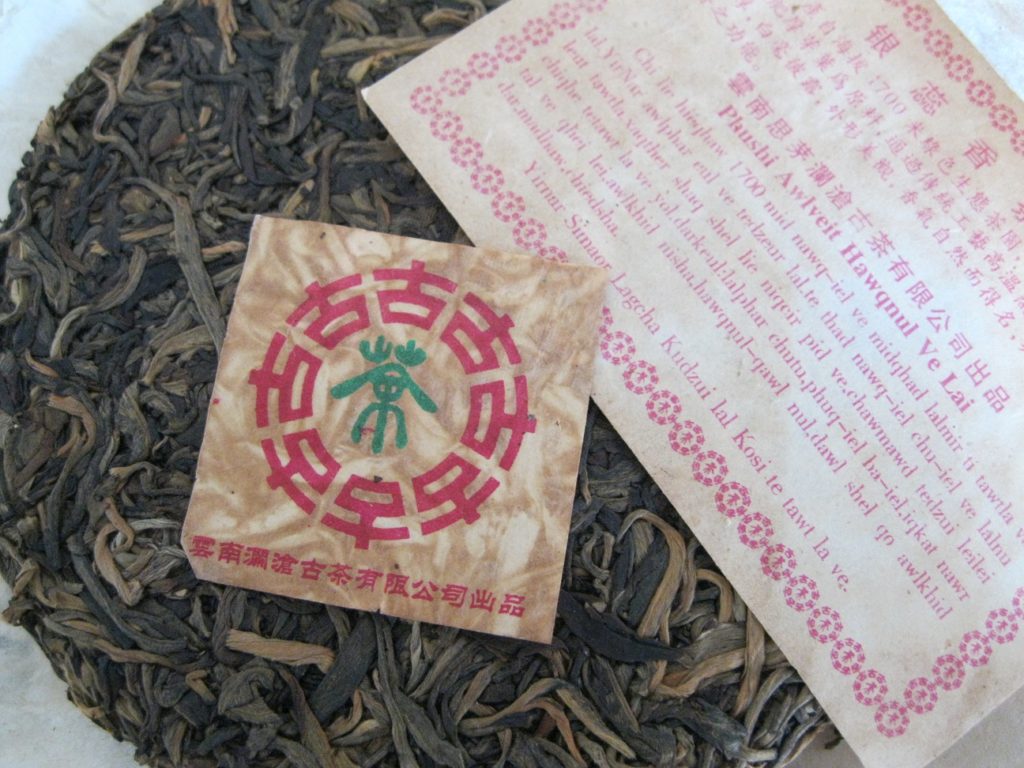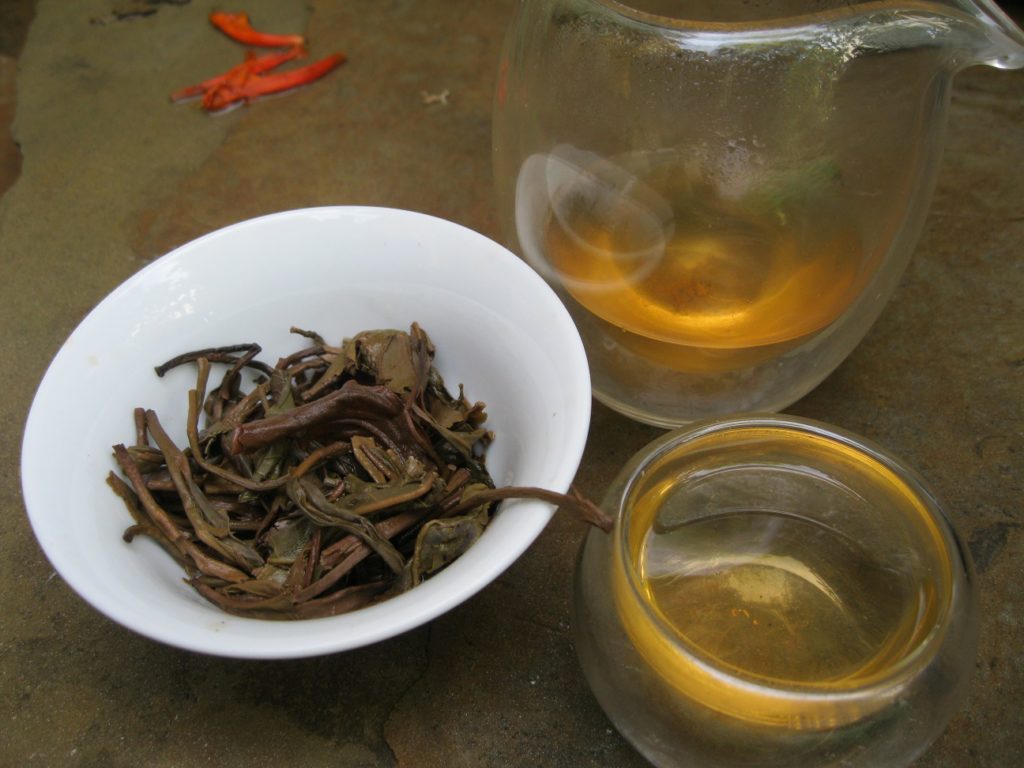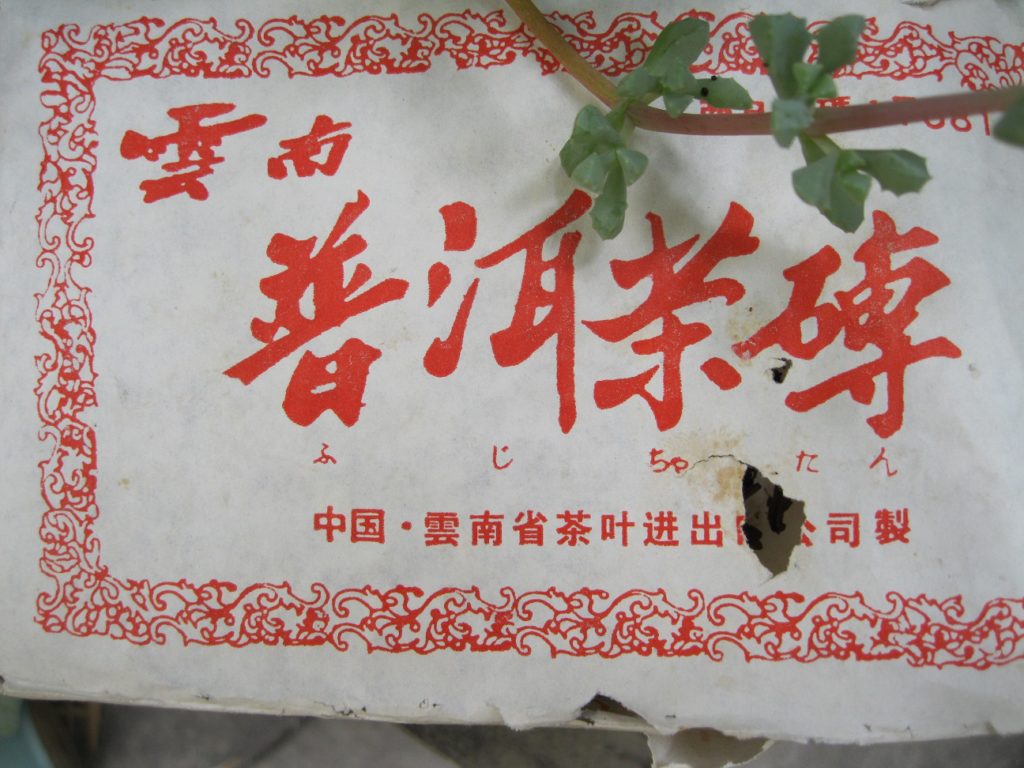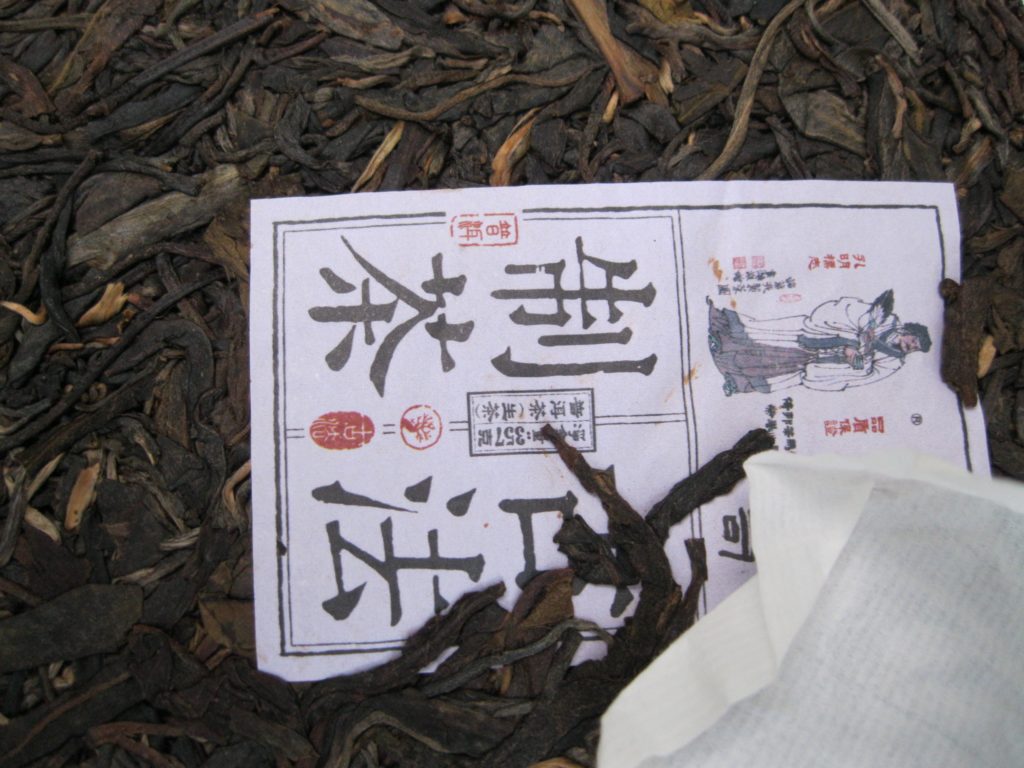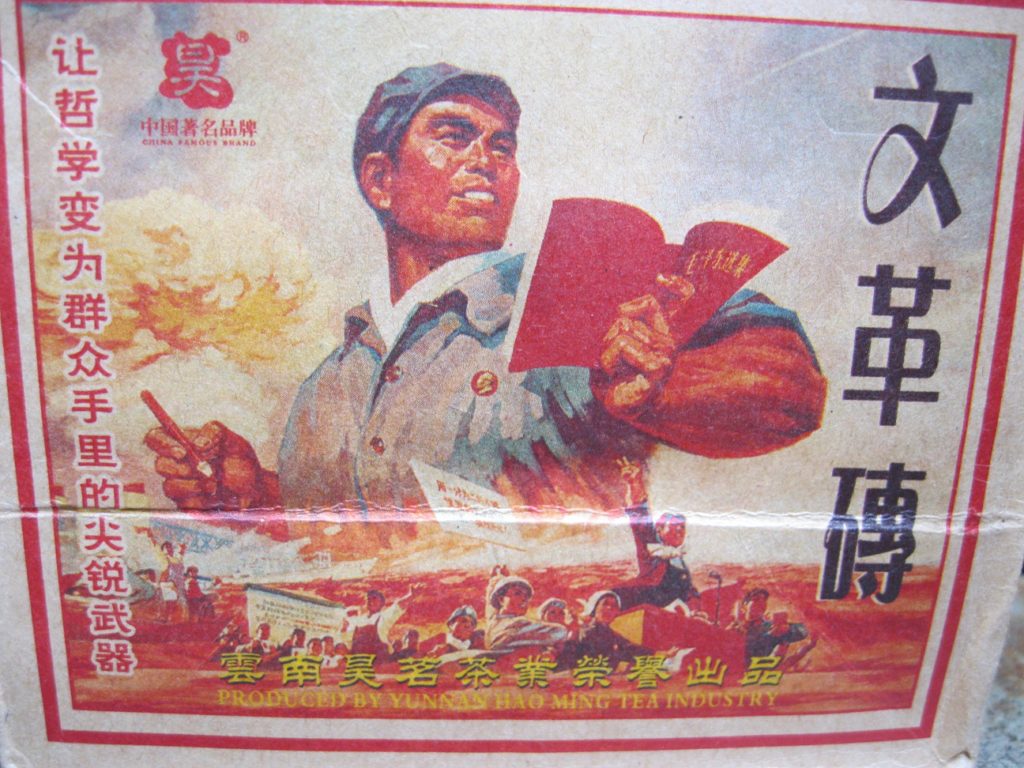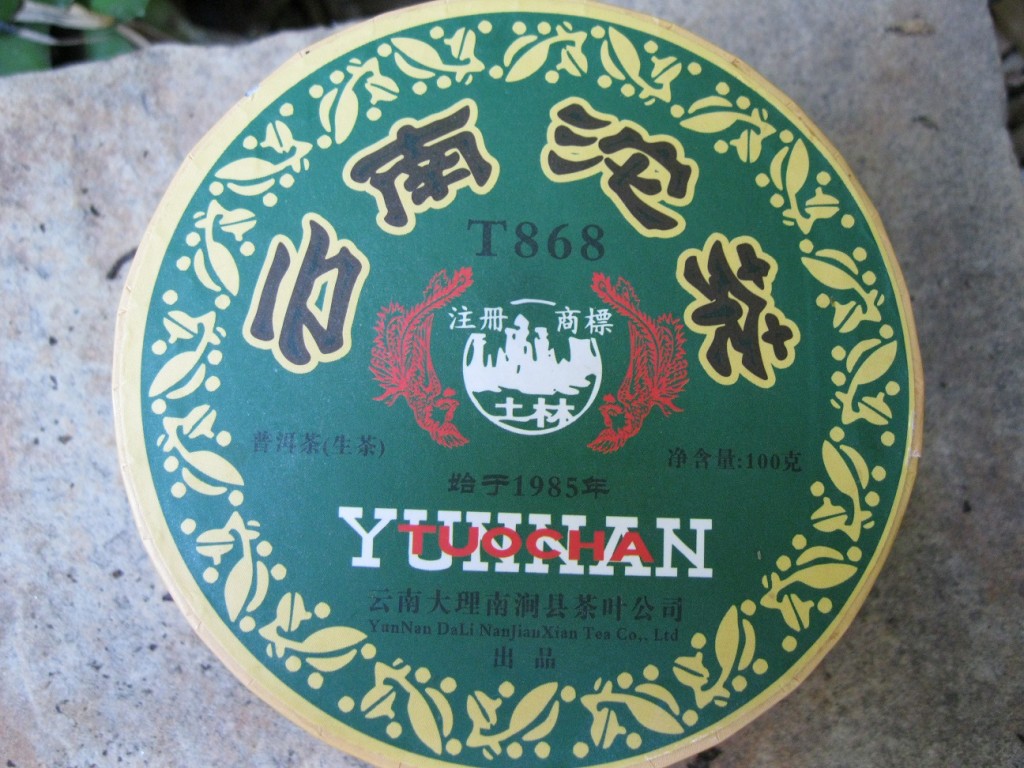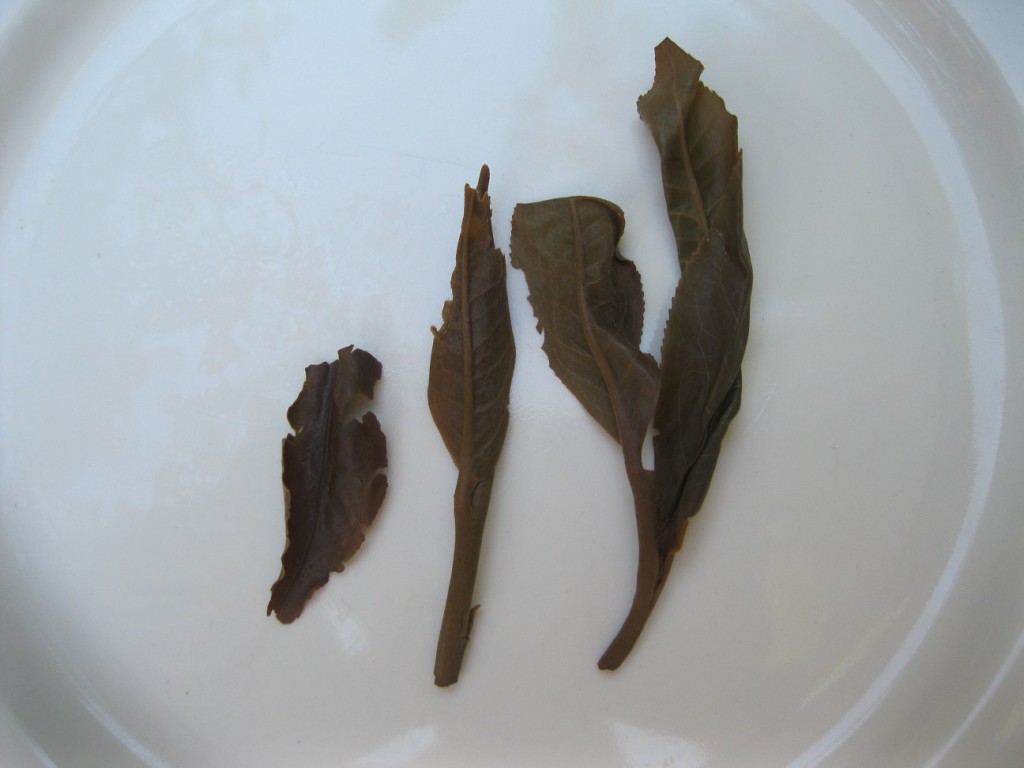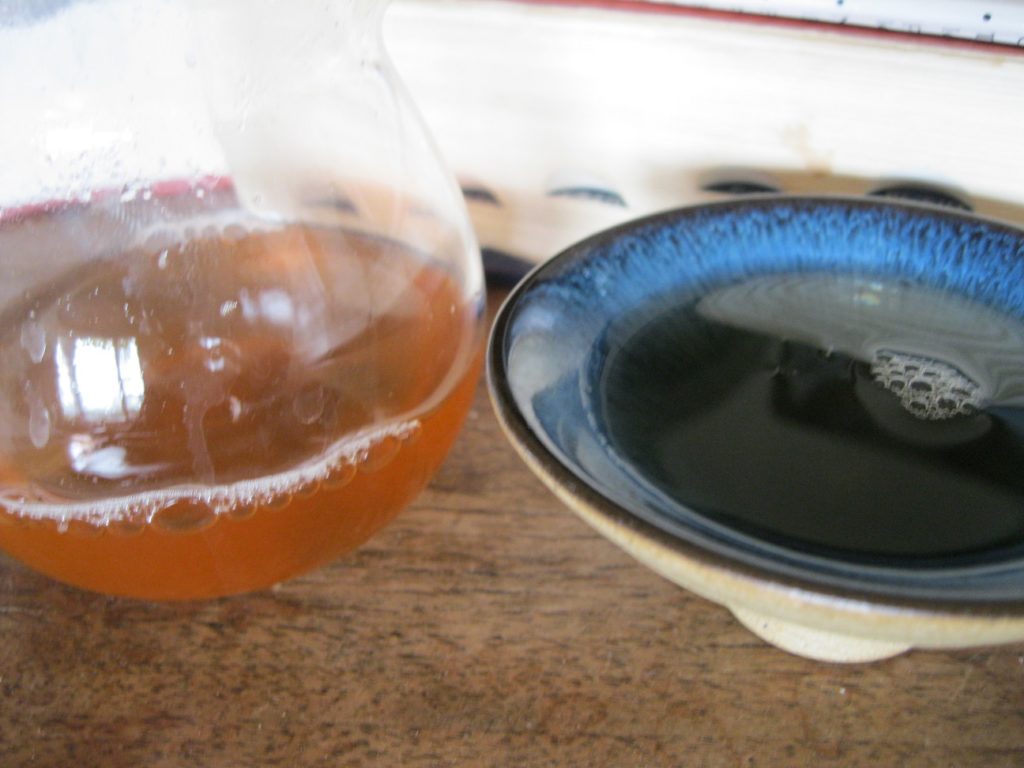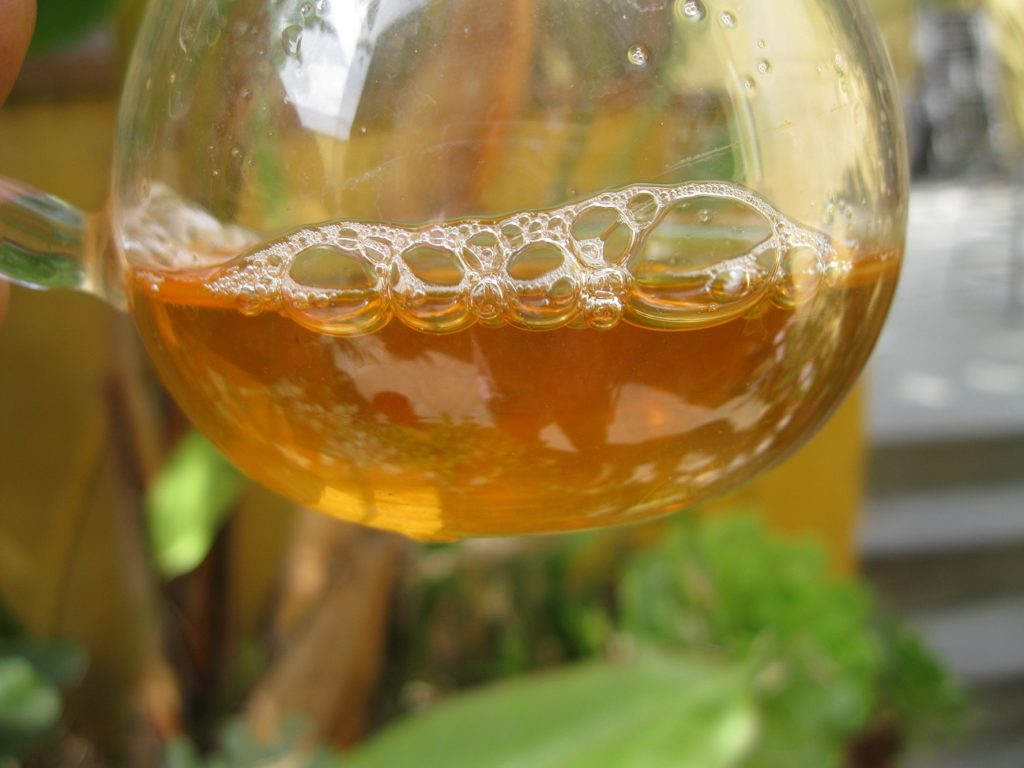’05 Jingmai “003”, LCGC
Everyone seems to love spring tea, aside from the classic recipes. The “003” is spring tea on another level, evocative of white tea but still with the bite that Westerners, that is west of the Kunlun Mts, crave.
Spring tea typically does not yield as many infusions as productions from later in the year. The “003” is no exception. That said, it provides high and refined notes that are unmistakably refined. LCGC likes offering productions that will smack you around a bit. This treasure gives you an idea of what the Chinese “tea head” values in higher-end productions.
Chock full o’ buds, you can tell from the picture that this has already undergone a great deal of transformation. I’ve noticed that many aged spring productions express kinda wild weed type notes similar to dandelion. For some this might take a minute to get used to. This is not the profile of the “003”, which is much more similar to silver needle white tea.

